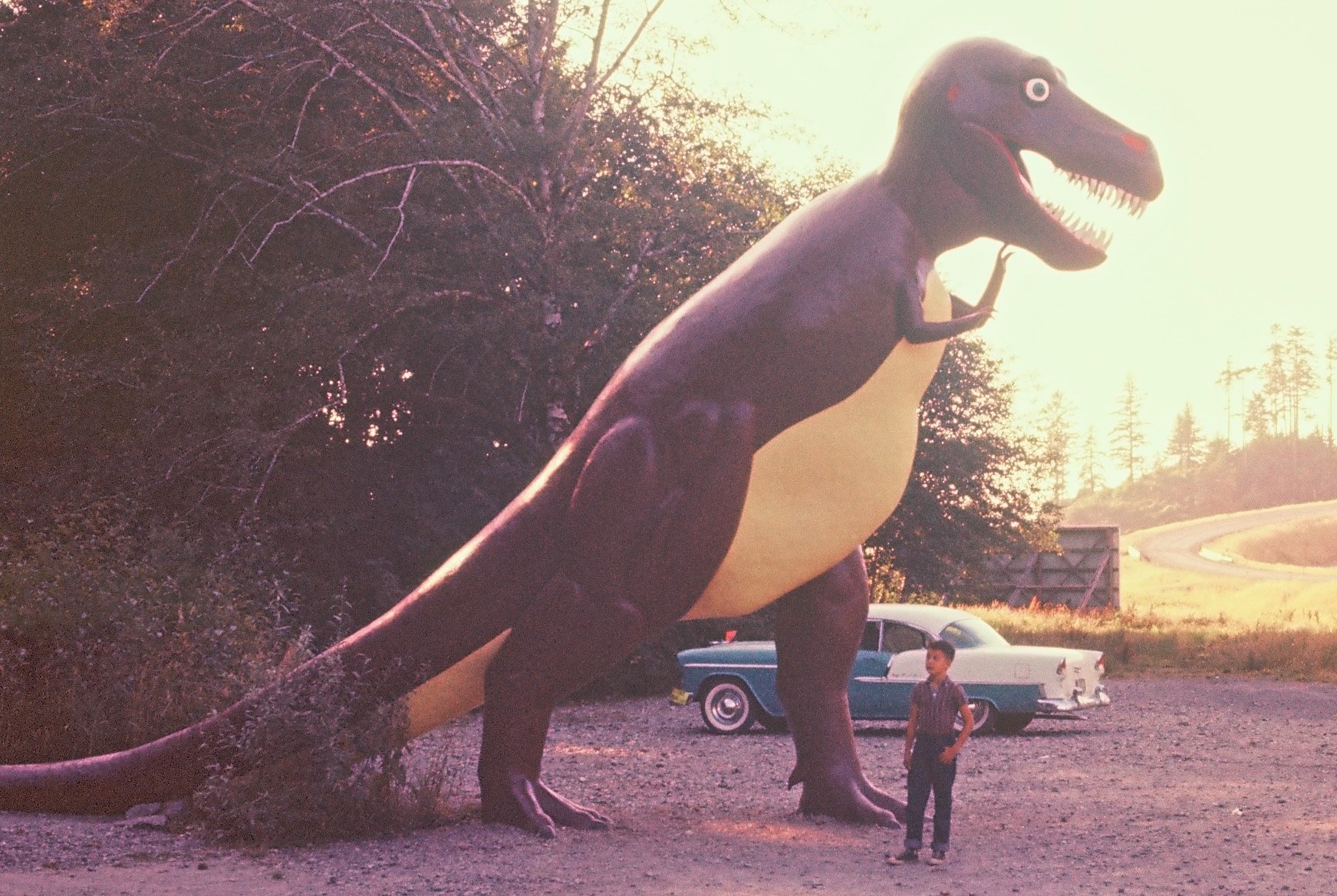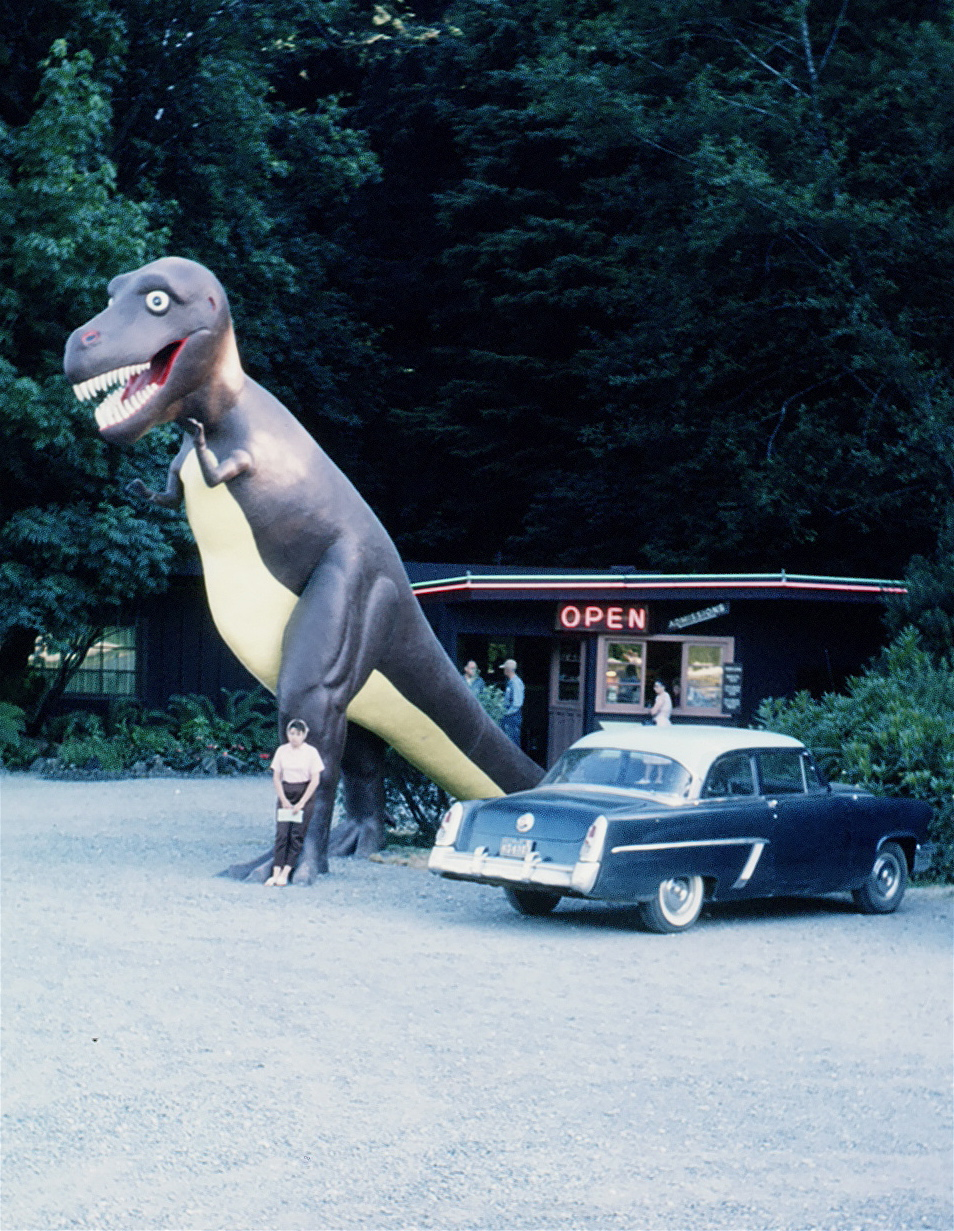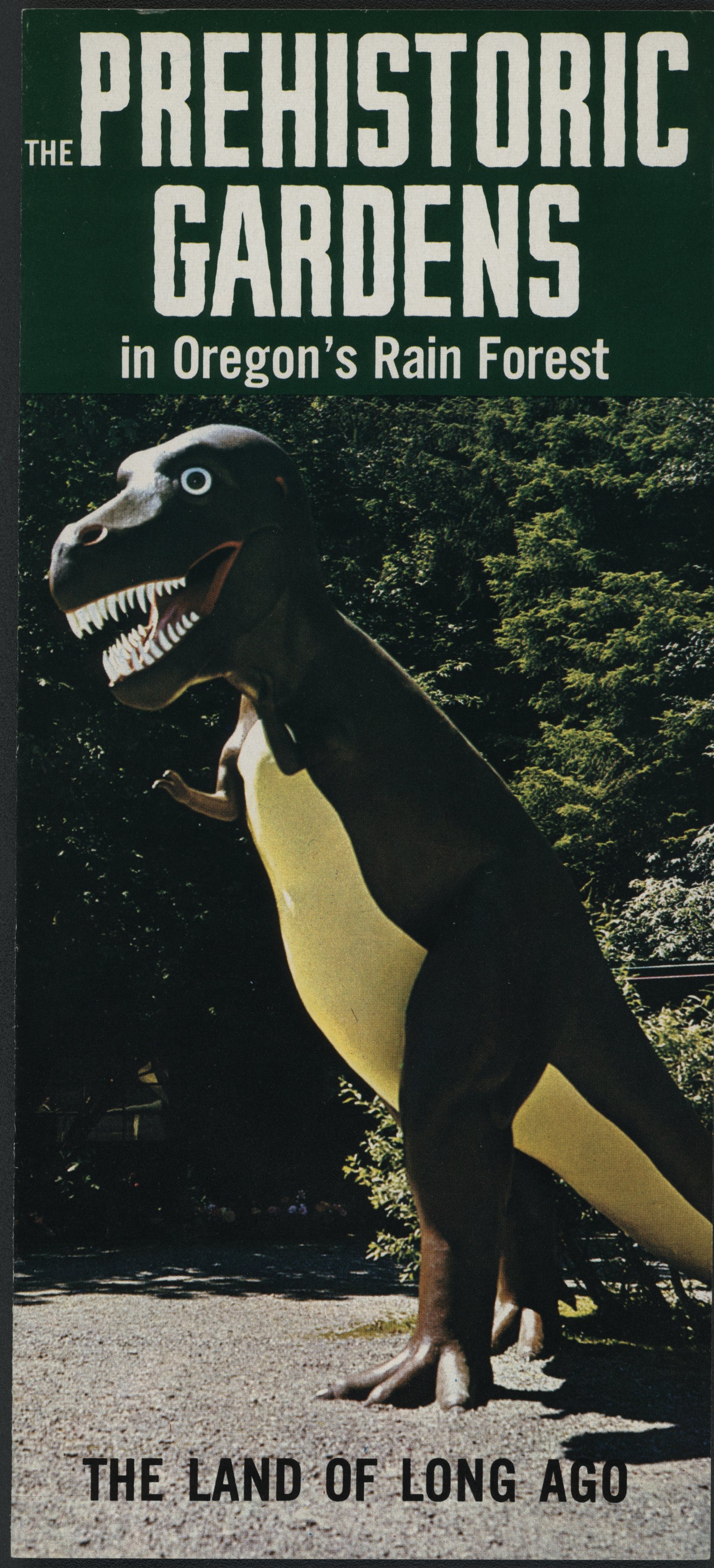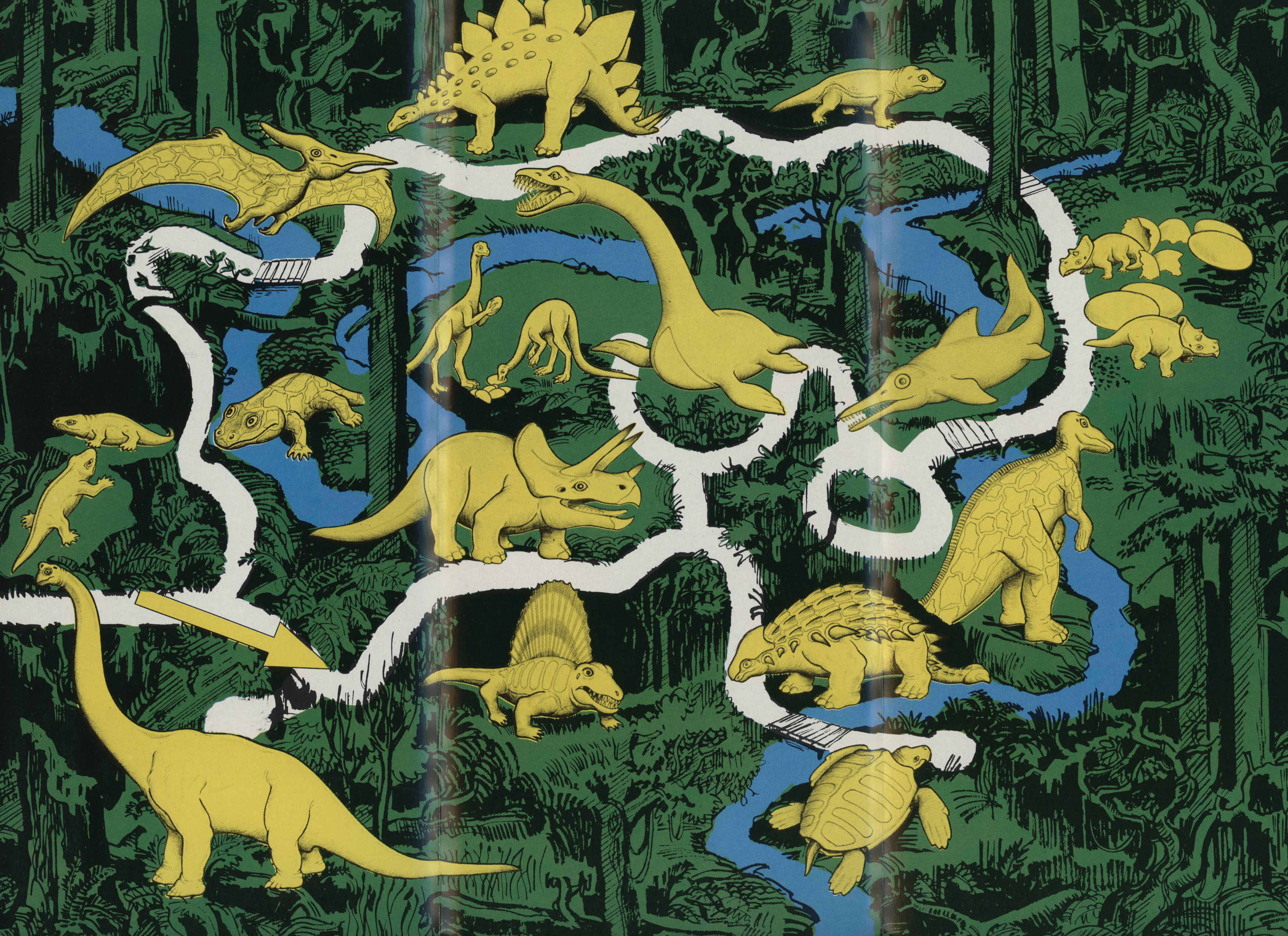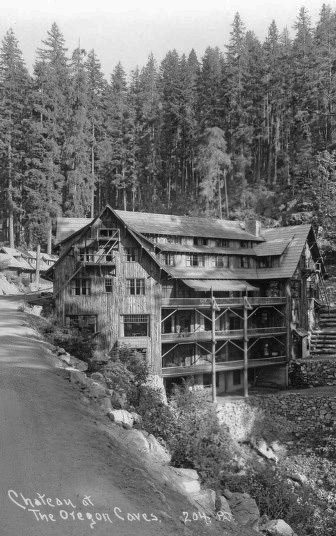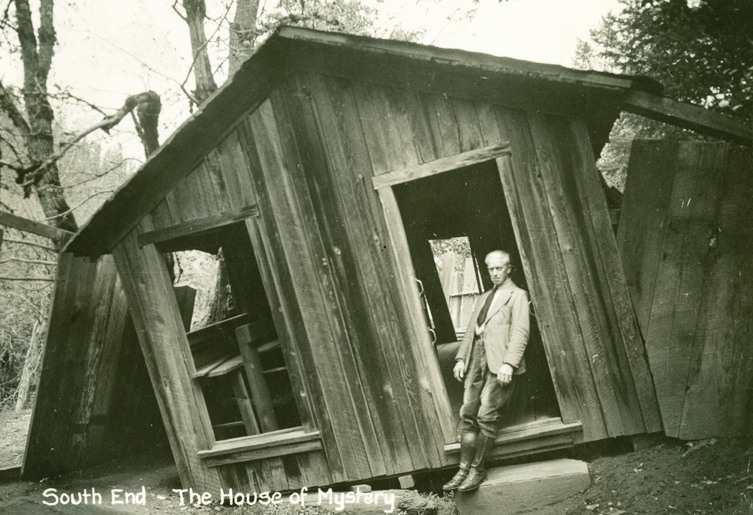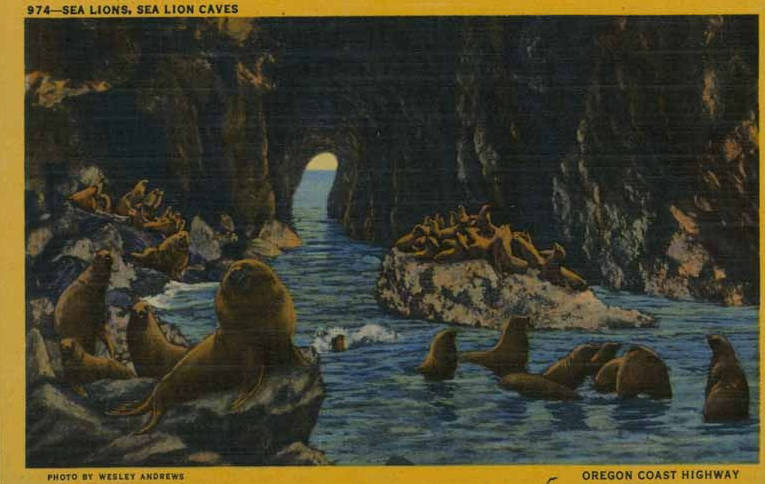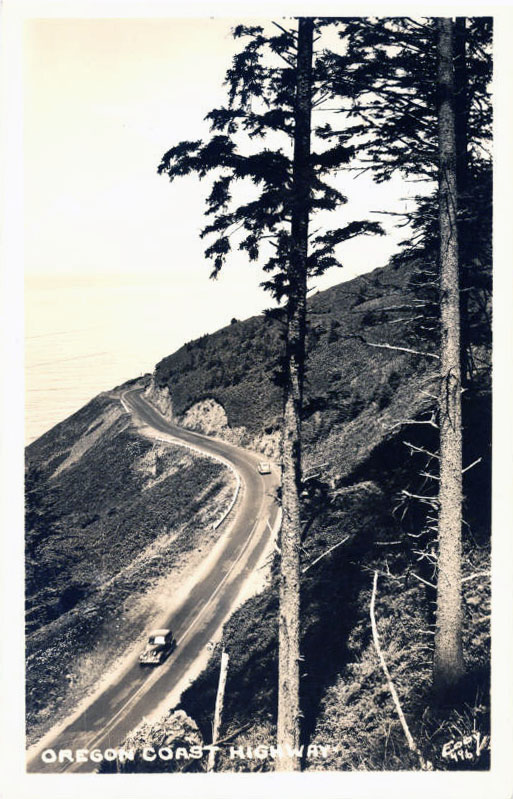Prehistoric Gardens, with its twenty-foot-tall concrete Tyrannosaurus greeting travelers a few miles south of Port Orford on Highway 101, has been a successful commercial roadside attraction for over six decades. Along a winding path through a dense forest of spruce and sword ferns, twenty-three life-size sculptures of dinosaurs and other extinct reptiles have been strategically placed. Unlike roadside attractions that aim simply to “amuse and amaze,” Prehistoric Gardens describes each creature featured in the garden and provides information about the Mesozoic Era—the so-called Age of Reptiles (251-65.5 million years ago). There is no scientific evidence that land dinosaurs ever lived in Oregon, which was mostly covered in ocean during that period.
A popular stopping place on the coast in Curry County, Prehistoric Gardens is a remnant of Oregon’s pre-freeway roadscape, where family-owned and operated attractions lured automobile travelers to stop, pay an admission fee, and experience something unusual.
When it opened to the public on January 1, 1955, Prehistoric Gardens joined Sea Lion Caves, Petersen Rock Garden, Oregon Vortex, and other family-owned attractions that had been built along the state’s two-lane federal highways. The Gardens’ founder, E.V. “Ernie” Nelson, saw his enterprise as a way to take advantage of the steadily increasing tourist traffic on the southern Oregon Coast after World War II. He purposely sited the business in Curry County, midway between the Sea Lion Caves to the north and the Trees of Mystery located to the south near Crescent City, California.
In 1952, Nelson had purchased a 26-acre tract of moist, northeast-aspect forest, where he constructed a family residence and gift shop. He began building the first dinosaurs in 1954, using steel armatures for the skeletal frames and layers of chicken wire, covered with several coats of concrete, to form the reptiles’ shapes. He painted the finished models in greens, browns, and rust-reds.
Born in 1907 on a Minnesota farm, Nelson had moved with his parents and siblings in the 1920s to Springfield, Oregon. He worked as an accountant during the Depression and World War II, and moved to Port Orford in 1953. Prehistoric Gardens, he later said, was the fulfillment of his “boyhood dream.” He attributed a lifelong interest in dinosaurs to the National Geographic magazines he had read as a boy.
For nearly five decades at Prehistoric Gardens, Nelson sold tickets, ran the small gift shop, and “talked dinosaurs” with visitors. He also built the life-sized models of extinct mammals for the owner of Thunderbeast Park, a less successful roadside attraction on Highway 97 near Chiloquin. The Prehistoric Gardens was a family enterprise, where Nelson's wife and children also worked. During the 1990s, with the popularity of the film Jurassic Park, Prehistoric Gardens employed as many as seven people.
In 1969, Nelson built the Gardens’ last dinosaur model, a Brachiosaurus—a vegetarian and one of the largest land animals ever on the planet. Taking four years to complete, the creature's long neck rises from behind a wooden fence near the fanged Tyrannosaurus in the parking lot, peering through the foliage at passing highway traffic.
Nelson died in 1999 at the age of ninety-one, and his grandchildren now own and run the business.
-
Prehistoric Gardens, 1957.
Courtesy Jeff LaLande
-
![]()
Prehistoric Gardens, 1962.
Courtesy Judson Hyatt
-
![Full brochure available under documents tab]()
Brochure for the Prehistoric Gardens .
Full brochure available under documents tab Courtesy Oregon Hist. Soc. Research Lib., Mss6000, Box 7 f10
-
![]()
Page from the brochure for the Prehistoric Gardens .
Courtesy Oregon Hist. Soc. Research Lib., Mss6000, Box 7 f10
Documents
Related Entries
-
![Oregon Caves Chateau]()
Oregon Caves Chateau
The Oregon Caves Chateau was constructed between 1931 and 1934 as an ov…
-
![Oregon Vortex (House of Mystery)]()
Oregon Vortex (House of Mystery)
The Oregon Vortex and House of Mystery, located on Sardine Creek in Gol…
-
![Sea Lion Caves]()
Sea Lion Caves
Eleven miles north of Florence on U.S. Highway 101 are the remains of a…
-
![US 101 (Oregon Coast Highway)]()
US 101 (Oregon Coast Highway)
Many places on the Oregon coast were virtually inaccessible in the earl…
Map This on the Oregon History WayFinder
The Oregon History Wayfinder is an interactive map that identifies significant places, people, and events in Oregon history.
Further Reading
Metzler, Ken. “Prehistoric Gardens.” Popular Mechanics (May 1958): 141-143.
Walker, Molly. “Celebrating 40 Years of Building a Boyhood Dream.” Rogue Coast, August 25, 1993: 12-16
Miller, Bill. “Watch for Dinosaurs!” Medford Mail Tribune, March 24, 2013: 2B.

